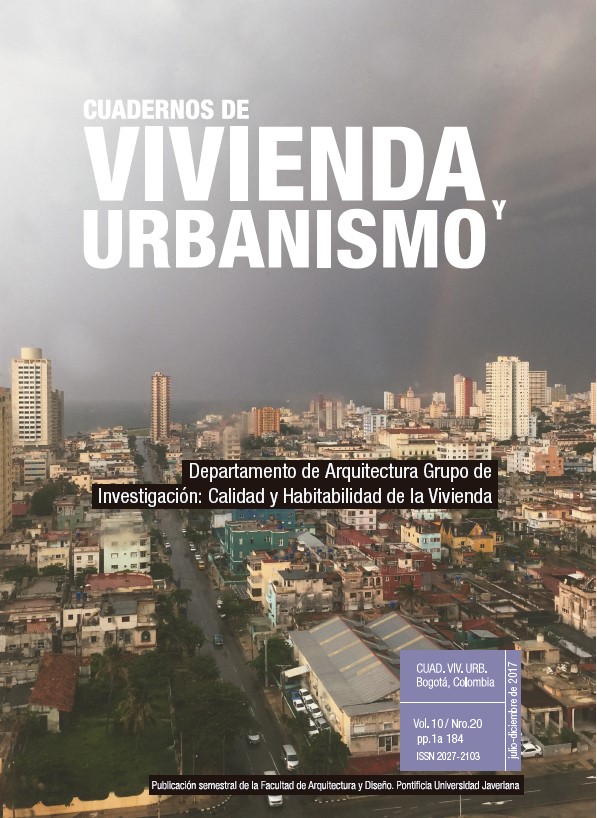Abstract
The mid-rise apartment building is an appropriate solution for urban housing, since it allows for a good use of urban land as they do not represent high construction and maintenance costs. The re-densification of consolidated urban areas through the insertion of new residential buildings makes possible to take advantage of existing infrastructure and services, and reduce distances. However, increased land use and densities conspire against the achievement of appropriate indoor environments. This article presents the main results of a research project carried out between 2000-2010 aimed at evaluating the design solutions of apartment buildings in Havana –particularly those located in compact urban areas– based on the integration of economic and quality requirements, which would act as a reference for new housing buildings to be projected and built in the consolidated urban fabric of the city.
This journal is registered under a Creative Commons Attribution 4.0 International Public License. Thus, this work may be reproduced, distributed, and publicly shared in digital format, as long as the names of the authors and Pontificia Universidad Javeriana are acknowledged. Others are allowed to quote, adapt, transform, auto-archive, republish, and create based on this material, for any purpose (even commercial ones), provided the authorship is duly acknowledged, a link to the original work is provided, and it is specified if changes have been made. Pontificia Universidad Javeriana does not hold the rights of published works and the authors are solely responsible for the contents of their works; they keep the moral, intellectual, privacy, and publicity rights.
Approving the intervention of the work (review, copy-editing, translation, layout) and the following outreach, are granted through an use license and not through an assignment of rights. This means the journal and Pontificia Universidad Javeriana cannot be held responsible for any ethical malpractice by the authors. As a consequence of the protection granted by the use license, the journal is not required to publish recantations or modify information already published, unless the errata stems from the editorial management process. Publishing contents in this journal does not generate royalties for contributors.


